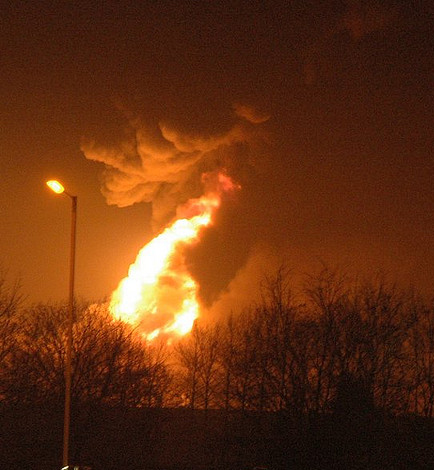Advances in field techniques have recently made hydraulic fracturing— “fracking”—a major part of energy production in the United States and Canada. Frackers pump high-pressure fluids into rock formations to expand cracks and create pathways for valuable hydrocarbons to flow out. The stimulant fluids are usually water-based, with additional chemicals (acids, surfactants, biocides, etc.) to improve effectiveness and solid ‘proppants’ to prop open the expanded openings (sand, etc.). Read my earlier blog here
Audit, Compliance and Risk Blog
Environmental Compliance: California Prepares To Regulate “Fracking”
Posted by Jon Elliott on Wed, Nov 20, 2013
Tags: Health & Safety, California Legislation, Environmental risks, Environmental, EHS, Hazcom, fracking, hydraulic fracking, Oil & Gas
On October 28, British Columbia, California, Oregon and Washington signed the Pacific Coast Action Plan on Climate and Energy, committing themselves to align efforts to control greenhouse gas (GHG) reductions to combat climate change, and to promote clean energy. The Action Plan is adopted under the aegis of the Pacific Coast Collaborative, which encompasses these four jurisdictions plus Alaska.
Tags: California Legislation, Environmental risks, Environmental, EPA, Greenhouse Gas, ghg, climate change, Canadian
Officially Linked: California and Quebec GHG Cap-and-Trade Programs
Posted by STP Editorial Team on Mon, Nov 04, 2013
In late September 2013, California’s Air Resources Board (ARB) and the government of Quebec signed an agreement to harmonize and integrate their cap-and-trade programs for reducing greenhouse gas (GHG) emissions. California’s GHG programs under AB 32 will be officially linked with Quebec’s programs beginning January 1, 2014.
Tags: Business & Legal, California Legislation, Environmental risks, Environmental, Greenhouse Gas, ghg, climate change, Canadian
It’s common knowledge now that lead is a systemic poison. Overexposure to it can damage our blood-forming, nervous, urinary and reproductive systems. In the past, lead was commonly added to industrial paints because of its characteristic corrosion resistance and color enhancement. Lead Poisoning Prevention Week takes place from October 20–26. Sponsored by the US Environmental Protection Agency (EPA), this year’s event focuses on protecting children from exposure to lead. EPA and partner agencies such as HUD are helping raise awareness among parents of ways to combat lead poisoning, from monitoring children’s consumption of certain types of imported candy to screening those most liable to be exposed to lead in the home.
Tags: Business & Legal, California Legislation, Environmental risks, Environmental, EPA
OSHA Proposes to Regulate Exposures to Respirable Crystalline Silica
Posted by Jon Elliott on Thu, Oct 17, 2013
The US Occupational Safety and Health Administration (OSHA) regulates thousands of chemicals, through a variety of regulatory standards. At the broadest level, employers must evaluate basic information about every potentially hazardous chemical, and provide information to employees in compliance with OSHA's Hazard Communication Standard. OSHA also provides somewhat-more-tailored requirements for classes of chemicals (such as flammables), and for types of activities that pose chemical hazards (such as welding). For a small number of especially hazardous chemicals, OSHA provides a detailed standard applicable to a single chemical—examples include asbestos, benzene, and lead. On September 12, 2013, OSHA published a proposal to establish just such a single chemical standard, for crystalline silica (29 CFR section 1910.1053).
Tags: Business & Legal, Health & Safety, OSHA, Environmental risks, Environmental, Hazcom, fracking, Oil & Gas
Recently, the U.S. Pipeline and Hazardous Materials Safety Administration (PHMSA) and Federal Motor Carrier Safety Administration (FMCSA) issued a new series of notices concerning hazardous materials handling and driver recordkeeping procedures. CMV drivers and transporters of hazardous materials should be alert to the following:
Tags: Business & Legal, Health & Safety, Training, Environmental risks, Hazcom, Oil & Gas
The greenhouse gas cap-and-trade program overseen by California’s Air Resources Board (ARB), which began earlier this year, not only allows for use of approved offsets to meet a portion of an entity’s emission reduction requirements. Entities will soon also be able to comply with the program by participating in its counterpart in the Canadian province of Quebec. By January 1, 2014, ARB’s cap-and-trade program will be linked with Quebec’s. A press release from ARB sums up key features of the linkage:
Tags: Health & Safety, Environmental risks, Environmental, EPA, Greenhouse Gas, ghg
Tags: Business & Legal, Environmental risks, Environmental, Greenhouse Gas, ghg, Oil & Gas
Motor Carrier Registration Systems to be Upgraded and Web-Based
Posted by Jon Elliott on Fri, Aug 30, 2013
Last week the Federal Motor Carrier Safety Administration (FMCSA) published major changes in the registration requirements it imposes on “motor carriers” that use roads and highways to transport materials—including hazardous materials. Over the next two years, these changes will consolidate four separate registration systems into a new web-based Unified Registration System (URS), designed to cover every domestic entity subject to FMCSA authority. Most elements of the new regulations will take effect on October 23, 2015, to allow FMCSA to develop additional URS features and to conduct several related rulemakings, and to allow regulated entities to prepare for the changes in compliance requirements.
Tags: Health & Safety, Environmental risks, Environmental, Hazcom, Transportation
One small but critically important sub-category of chemical incidents consists of those that can produce mass casualties, usually when a cloud of toxic or superheated gases are spewed out by a fire or explosion. Given America’s fragmented approach to hazardous materials regulation, it’s no surprise that separate regulatory programs have grown up to address these concerns—leading inevitably to overlaps and gaps in coverage.
Tags: Corporate Governance, Business & Legal, Health & Safety, OSHA, Environmental risks, Environmental, EHS, EPA, Greenhouse Gas, Hazcom










.jpg)